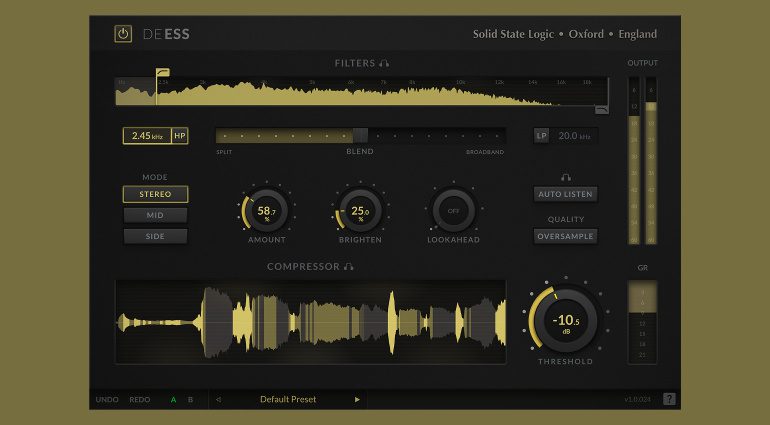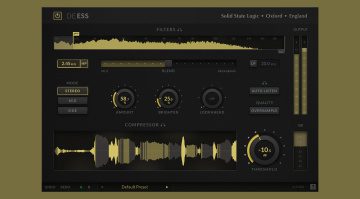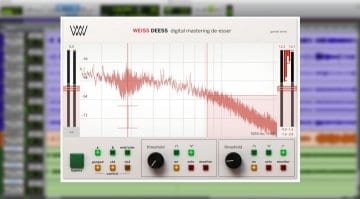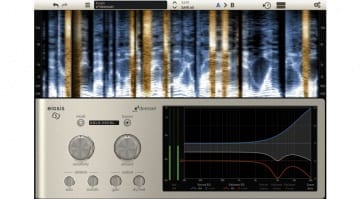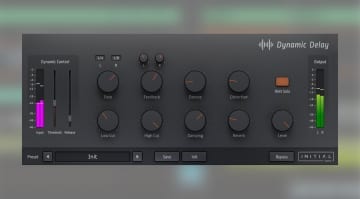SSL DeEss: Keep sibilance in check with relative-threshold de-essing
SSL wants to solve de-essing once and for all with the new DeEss plug-in. DeEss uses a special algorithm to adjust the threshold dynamically in relation to the input level, thereby de-essing quiet signals just as effectively as louder passages. With many additional features such as adjustable filters, mid-side processing, and more, SSL DeEss is a comprehensive tool for precise de-essing.
SSL DeEss
Traditional de-essers use a fixed threshold level to separate the sibilant frequencies from the rest of the signal. This means that if your singer sings quietly or whispers, or if you don’t want to compress the input signal quite as much, sibilances might slip through the de-esser undetected during quiet sections. With DeEss, SSL has taken on the challenge to solve this problem.
According to SSL, DeEss uses a relative threshold algorithm that automatically adapts the threshold in relation to the input signal. This means that the detection of sibilances should work just as well on quieter portions of the signal, resulting in a coherent sound independent of the input level. It also means that you don’t have to readjust the de-esser every time you make level changes earlier in the signal chain.
Adjustable sidechain filters
In addition to this, DeEss offers several other features designed to control sibilant frequencies as effectively as possible. A pair of 3rd order Butterworth sidechain filters allows you to dial in the desired frequency range precisely. You can blend the filtered sidechain and broadband signals. The Auto Listen button makes it easy to adjust the filters and effect amount by automatically switching to an audition mode, whenever you make changes to the relevant parameters.
In addition to stereo and mid-side modes, DeEss offers a look-ahead feature. A multi-shade waveform visualizer helps to keep track of unaffected and de-essed portions of the signal while you’re adjusting the signal. There’s also a Brighten knob that lets you make up for any high-frequency transients that might have been lost during de-essing. And finally, an Oversampling button improves the overall quality.
While SSL isn’t the first developer to implement level-dependent de-essing (ToneBoosters Sibalance comes to mind, for example), it’s certainly an interesting concept that could change the way you look at sibilance.
Price and compatibility
SSL DeEss is now available for an introductory price of EUR/USD 79 (down from EUR/USD 129). This offer is only good through May 5, 2022, so you’ll need to act quickly. You can get it at Thomann*.

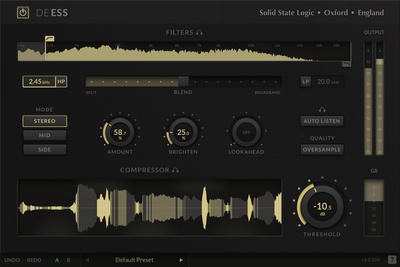
The plug-in requires macOS 10.15 or higher or Windows 10 or higher. It’s available in VST, VST3, AU and AAX formats (64 bit). You’ll also need an iLok account or an iLok 2/3 dongle for authorization.
More information about SSL DeEss
Video
You are currently viewing a placeholder content from YouTube. To access the actual content, click the button below. Please note that doing so will share data with third-party providers.
* This post contains affiliate links and/or widgets. When you buy a product via our affiliate partner, we receive a small commission that helps support what we do. Don’t worry, you pay the same price. Thanks for your support!
